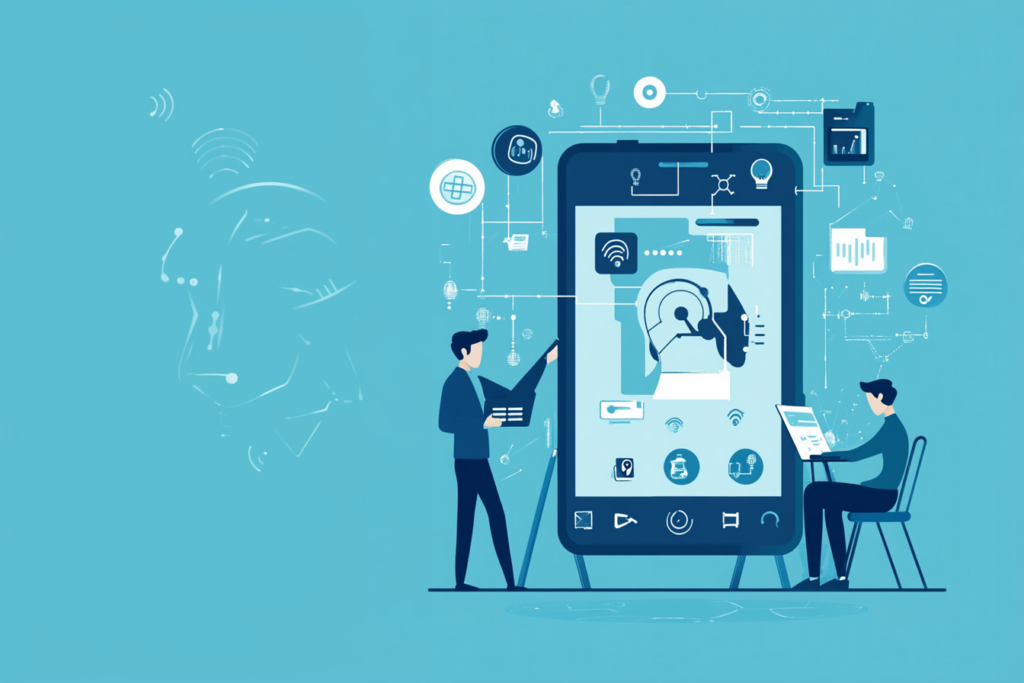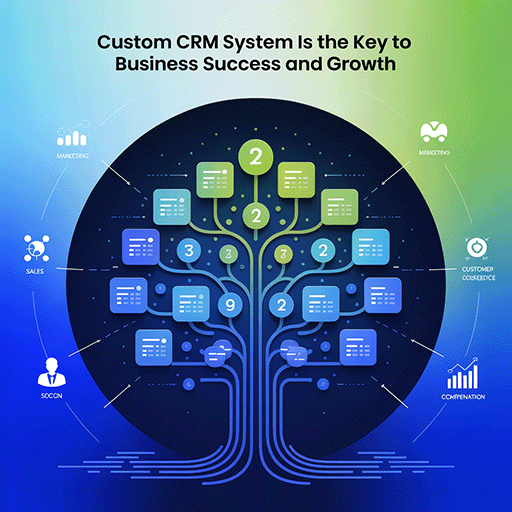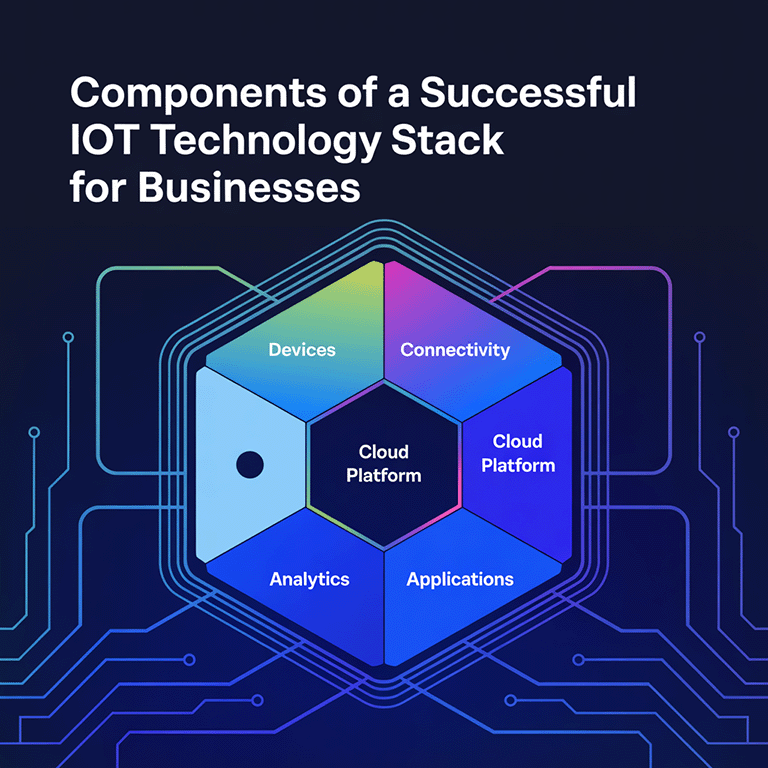AI is more than mere talk in today’s tech-oriented world. It’s a driving factor that is making phenomenal changes in industries ranging from healthcare to finance and beyond. Given these innovations, companies and AI application developers must understand how much it costs to develop these apps despite probably being beyond reach for many startups. Ranging from $30,000 to $80,000+, app costs may mislead many. That’s why it’s useful to know what affects the total price.
Understanding the cost factors in AI app development is critical for businesses to plan their budgets and allocate resources effectively. Other factors to consider for businesses that understand this concept include planning realistic timelines, setting expectations, and ensuring ROI. Developers who could estimate project scopes well enough would benefit by choosing appropriate technologies without compromising quality standards or delivering values.
In March 2023, a study by Statista indicated that the world’s AI market is now calculated to be almost $100 billion in value. This amount is expected to grow twenty-fold by 2030. It’s, therefore, not strange that nowadays, many companies are integrating artificial intelligence into their operations to outpace their competitors through process optimization and gain a competitive advantage.

This article addresses some of the things that influence AI app development expenditures. We shall examine issues such as AI algorithm complexity, data needs, integration into current systems, and regular upkeep or maintenance. Organizations with such information can easily navigate the complexities involved while developing AIs, effectively leveraging their power for transformation.
The Cost of Building an AI App In Numbers
Building an AI app can often feel like you are negotiating financial minefields. To paint a clearer picture, here is an estimate of what it could cost you at each stage of development, at different complexity levels of an app feature set, when considering team and localization, platform selection, and industry-related costs.
1. Estimated Costs by Development Stage:
- Market Research: $1,000 – $5,000
- Design: $5,000 – $20,000
- Front-end Development: $10,000 – $30,000
- Back-end Development: $15,000 – $40,000
- Development: $20,000 – $60,000
- Quality Assurance: $10,000 – $25,000
- Deployment and Launch: $5,000 – $15,000
- Post-Development: $5,000 – $20,000
2. Cost by App Complexity:
- Basic App: $30,000 – $50,000 | 8-10 weeks
- Medium App: $50,000 – $80,000 | 10-14 weeks
- Advanced App: $80,000+ | 14+ weeks
3. Cost Based on Features:
- Cost increases with the complexity of features, tools, and technologies used.
- Common AI features include:
- API Integrations
- Phone Sensors
- Geolocation
- IoT Integration
- Accessibility Options
4. Cost by Development Team and Location:
- Outsourcing vs. In-house Team:
- Outsourcing may cost less but depends on project requirements.
- In-house teams may be more expensive due to tools and hardware setup.
- Cost by Role:
- AI Expert Developer: $30,000 – $100,000+
- UI/UX Designer: $4,000 – $15,000
- Project Manager: $5,000 – $15,000+
- QA Specialist: $8,000 – $30,000
- Business Analyst: $2,000 – $10,000
5. Cost Based on Company Location:
- India: $20 – $40/hr
- United States: $80 – $170/hr
- Ukraine: $30 – $100/hr
- Australia: $80 – $200/hr
6. App Cost by Platform:
Several development platforms should be taken into consideration when creating an app.
App Platforms for Native Apps: For Android programs, use Java or Kotlin; for iOS, use Swift.
Some web app platforms include Web-based applications together with Progressive Web Apps (PWAs), which are cheaper than native app schemes in most cases.
Cross-platform app development allows developers to make apps for both iOS and Android simultaneously, which helps cut development expenses.
Hybrid App Platforms: Hybrid applications feel like native apps when installed but run inside the webview component, combining native and web application characteristics.
- Native Apps (Android & iOS): $50,000 – $100,000
- Cross-Platform Apps: $25,000 – $60,000
- Web Apps: $20,000 – $80,000
- Hybrid Apps: $10,000 – $150,000
7. Cost by Industry:
- Banking and Finance: $50,000+
- Real Estate: $40,000+
- Transportation and Logistics: $80,000+
- E-learning: $35,000+
- Healthcare: $90,000+
- E-commerce and Retail: $80,000+
- Entertainment and Media: $50,000+
- Marketing: $30,000+
Understanding AI App Development

If you encounter daunting obstacles along the way, don’t worry; help is here. We will comprehensively explain how the price for developing AI applications is estimated due to collaboration with some of our experts. It’s important to note that the costs are not fixed, so they could jump higher depending on various factors.
Furthermore, we will show you how best to invest in AI to experience sustainable growth in an era of digital transformation. Business executives who want to explore opportunities in AI can use this as their guide to navigating through intelligent machines.
Is AI App Development As Valuable As They Say?
Making an app is very common; however, integrating artificial intelligence (AI) into your app will achieve the optimum business point. It will power up the application in ways that simulate human cognitive functions exceeding the mere addition of value. AI apps stand out as they solve problems and do tasks that have conventionally been done by humans using algorithms.
Traditional Apps with AI Apps
Traditional apps have a simple character that uses constant rules as well as a lot of human input for their operation. They cannot self-learn or improve. This is where AI applications stand out. Through machine learning algorithms, they learn new ideas and constantly improve their performance. Consequently, at the expense of this advanced functionality, developing AI apps may be expensive as they have complex algorithms and tools in use.
Reasons Why Businesses Are Going Big On AI App Development
AI is more than just a buzzword; it’s a game changer in several industries. Companies, such as Alibaba, Apple, IBM, and more, are embracing AI algorithm developments to increase sales volumes and make astounding customer experiences. Here is why AI apps simply rock:
-
Data-Driven Decision Making
AI analytics have been of great assistance because it would otherwise be difficult for any business to comprehend large data sets in real time. This leads to smarter, real-time decision-making, giving companies a competitive edge.
-
Supercharged Automation
AI apps don’t just do tasks; they also do them better than what we are used to. By automating routine and time-consuming activities, businesses can better utilize resources for enhanced productivity.
-
Personalization at Its Best
Concerning the provision of personalized experiences, AI changes things for the better. Artificial intelligence can evaluate user behavior and interests to create personalized content to suit every individual’s demands.
-
Staying Ahead of the Competition
Being able to distinguish oneself from one’s competitors is now seen as a critical feature in any business. What sets apart today’s leading companies is their ability to utilize AI for product| and service development & subsequently, marketing|customer attraction.
-
Cost Efficiency
Although creating an AI app may require substantial upfront investments, its long-term benefits are irrefutable. Businesses can significantly decrease operational costs through automation of processes and job displacement due to manual labor reduction.
-
Predictive Insights
Businesses can anticipate market trends and customer behavior using AI’s predictive nature. They can also act proactively and stay ahead of the competition by employing AI algorithms that predict future events based on historical data.
-
Enhanced Security
Security is paramount because the number of cybersecurity threats grows every day. Through real-time identification and neutralization of threats, AI enhances cybersecurity measures. With time, machine learning algorithms used for security will be able to recognize new attack patterns, thus offering sound protection in an environment that constantly changes due to evolving threats.
-
24/7 Availability
AI apps never sleep. They are always available, offering uninterrupted services to businesses with customers worldwide. This all-the-time availability enhances customer satisfaction.
-
Innovative Product Development
AI is a sure way of placing businesses at the forefront of product innovation. AI-driven solutions or intelligent features integration enables companies to meet changing consumer needs with new products.
How Much Does It Cost to Make an AI App: Key Cost Factors

-
Scope and Complexity of the Project
The project scope is related to the artificial intelligence system’s primary aims, functionalities, and features. Complexity increases with more sophisticated features such as natural language processing (NLP), deep learning, or real-time data processing.
Cost Impact: The cost is higher for more complex and extensive projects. Simple AI models could be cheaper, but complex ones, like self-learning AIs or predictive analytics, may cost much more.
-
Development Team Composition
The team needed to make the AI system — or, simply put, artificial intelligence — includes data scientists, AI engineers, software developers, project managers, and domain experts. How to find an expert team of app developers? Read on in our blog.
Cost Impact: A larger, more experienced team naturally means higher costs. As a rule, teams from North America and Europe charge more for their services than those from Asia and Eastern Europe because of different geographical locations.
-
Technology and Tools
Software, such as TensorFlow and PyTorch, cloud services like AWS or Azure, and specialized hardware like GPUs support AI development.
Cost Impact: The total cost will include license fees for software, cloud service costs, and hardware costs. The more you pay, the better performance and scalability you will enjoy when using high-end tools and technologies.
-
Data Requirements for App Development
Data underpins every AI system. The expenses consist of data collection, cleaning, labeling, and storage.
Cost Impact: Acquiring or generating high-quality, large-scale datasets can be a costly affair in itself; if we add the need for continuous data updates or proprietary data into consideration, the costs would further skyrocket.
-
Integration with Existing Systems
Integrate your AI system with existing IT infrastructure databases or an application.
Cost Impact: Achieving seamless integration would require more work in terms of development, and this may entail creating custom APIs or middleware that could increase expenses.
-
Customization and Personalization
Customize the AI system to fit your business requirements or personal tastes.
Cost Impact: Customization is often expensive, involving extra development time and resources, especially for highly specialized or industry-specific applications.
-
Testing and Quality Assurance
Making sure that the AI system works well requires rigorous testing. Such testing includes unit, integration, and user acceptance, among others.
Cost Impact: Carrying out comprehensive testing to ascertain reliability requires extensive labor and time, which can cause the project cost to escalate. This might necessitate an investor to learn upfront how automated testing tools function.
-
Deployment and Maintenance
Post-launch maintenance involves releasing updates, monitoring performance metrics, and fixing bugs to ensure that the Artificial Intelligence system runs seamlessly in production.
Cost Impact: The costs associated with deployment vary depending on the area or environment of operation (cloud-based or on-premises) and ongoing maintenance issues. Additionally, regular updates lead to increased costs in the long run because they require scaling as well as performance tuning.
AI App Development Costs Modified By Hidden Factors

Aside from design and development services, several key factors can significantly affect the cost of developing an AI application. If you happen to be involved with a team that is inexperienced in dealing with such issues, it is important to know about these hidden expenses:
AI-based Hardware Costs
Developing AI applications often necessitates specialized hardware, such as Tensor Processing Units (TPUs) or Graphics Processing Units (GPUs), which are essential for the complex and demanding processes involved in machine learning models. The maintenance of such hardware can significantly impact the overall expenses associated with the development process. Additionally, many AI applications rely on cloud services to access high-performance computing resources, which introduces costs related to cloud service usage despite eliminating the need for in-house hardware.
AI App Data Security Costs
It is necessary to ensure that the personal data used by AI applications is well protected. There may be supplementary costs associated with implementing encryption mechanisms, complying with data protection regulations, etc. Security infrastructure investment is often required to meet standards like HIPAA and GDPR, which puts more burden on security investments within specific sectors. Additionally, for AI systems dealing with personal or private information to be secure from cyber threats, there must be regular security audits, vulnerability resolution, and robust cyber security measures, all of which contribute to increased costs during development.
AI Applications Publishing Costs
Sometimes, there are subscription charges related to app distribution on platforms such as the App Store or Google Play store. These platforms may levy app maintenance charges, including one-off payments, subscription fees, and revenue-sharing models. Moreover, some parts of the world have specific legislations governing AI apps, and ensuring compliance with these laws would demand that we spend more cash again. This could involve getting certified or meeting different deployment standards across various markets.
Reducing AI Mobile Apps Costs
There are various strategies used by proficient artificial intelligence developers to cut down on development expenditure.
Some methods include:
Clearly Defining Requirements
It is important to have clear client needs. For this reason, the development team interfaces with the client to document every feature they desire and do some research regarding basic wireframes and cost estimation. This reduces cost and time since only necessary functionalities are concentrated upon.
Develop a Minimum Viable Product (MVP)
Developing an MVP means having a less-than-full app, which takes less time and money. Although not all features may be present, there will still be enough core functions to see how people like it before proceeding with complete development, helping to understand better how to allocate future expenses more efficiently.
Use Open Source Tools and Libraries
For cost-effective development, developers can use open-source tools and libraries that offer robust functionality without the high licensing fees associated with proprietary software. As a result, by applying these inexpensive solutions, companies can produce quality AI apps at reasonable prices.
Third-party AI Software Development
Third-party AI software development entails companies or individuals working together with professionals who designed the artificial intelligence applications, tools, or services. This person-to-person collaboration is necessary to create new ideas and develop innovative solutions tailored to specific projects and purposes. The services often use platforms with already-built AI frameworks and APIs or create custom frameworks for complex development requirements. This ensures that all tasks needing AI can be handled well without leaving out any unique needs.
LITSLINK’s AI App Development and Costs
At LITSLINK, we focus on high-quality solutions at scale, not just calculating costs. Our team of experts is skilled in developing extraordinary AI-driven applications using cutting-edge technology and methodologies.
Why LITSLINK?
LITSLINK is a leading, US-based custom software development company dedicated to providing AI solutions for your company. We are your best partner if you want to automate operations, create unique products, or introduce amazing solutions to the market. Our mission is to make advanced technology available to small and large companies through intelligent automation tools.
Ready to Get Started?
LITSLINK is the place where innovation meets accuracy; this is where you can unlock the potential of artificial intelligence in app development. Start by using our app cost calculator to easily estimate how much it will cost to build your breakthrough app. This complex calculator accounts for all the aspects of the project and thus is more detailed.
How It Works: A Simple Three-Step Process
Fill Out the Questionnaire: Describe in detail your app’s functions, potential platform integration options, etc., because they affect its final price.
Input Your Contact Information: Provide your contact information so we can send you your quote.
Obtain A Personalized Quote Immediately: Get a custom-made quotation reflecting how complex and extensive your project will be.
Final Thoughts
To successfully build an AI app, several financial considerations must be accounted for. These include the complexity associated with the algorithms involved, project scope choice, data needs, and technology selection, which all impact how much it will cost. While it might appear costly at first glance, benefits such as increased automation, data-driven decisions, and personalized user experiences that come with artificial intelligence will undoubtedly outweigh them for long-term return.
Knowing these cost factors as the AI market grows further would give both companies’ executives and programmers an upper hand when making expenditure decisions. Hence, stakeholders should break down the associated expenses for every phase of development into something less complicated based on team makeup type and continuous improvements, thus giving them a better understanding of the financial aspect of making such apps for Artificial intelligence.
Building an AI app will help businesses become pacesetters, allowing them to outdo their rivals, improve operational effectiveness, and provide an outstanding experience, among others. Through proper planning and strategic financial commitment, AI’s potential can be maximized to promote economic growth amidst digital transformations.





